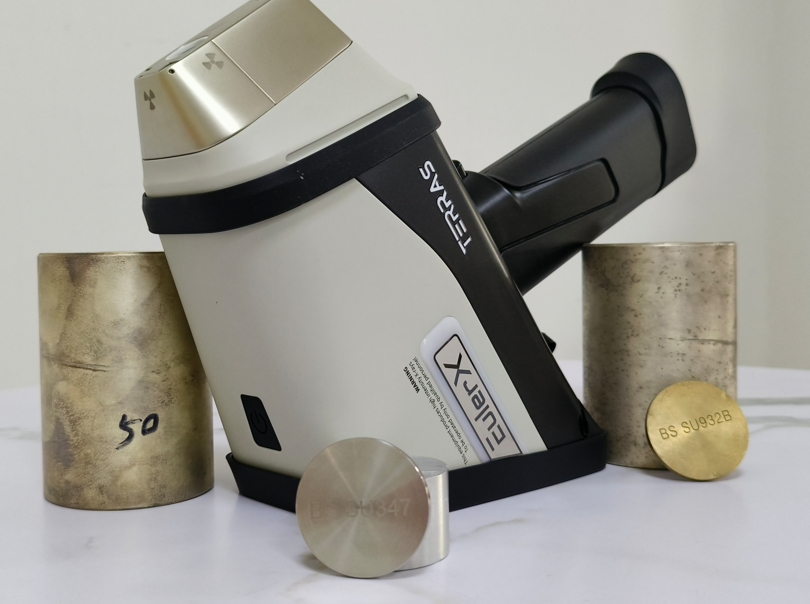
XRF Technology
A high-tech enterprise focusing on the development and application of X-ray technology products, committed to becoming a leading supplier of X-ray industrial testing solutions.
Exploring the Technology Behind Handheld Material Analyzers
In today’s fast-paced world, industries like manufacturing, pharmaceuticals, mining, and environmental testing increasingly rely on quick, accurate material analysis to maintain quality standards, ensure safety, and streamline processes. Gone are the days when lab-based testing was the only option. Now, handheld material analyzers have emerged as powerful tools that provide instant, on-site results without the need for cumbersome, time-consuming lab work.
What Are Handheld Material Analyzers?
Handheld material analyzers are portable devices designed to identify and analyze the composition of materials on-site. These analyzers use advanced technologies such as X-ray fluorescence (XRF), near-infrared (NIR) spectroscopy, Raman spectroscopy, and laser-induced breakdown spectroscopy (LIBS) to deliver rapid and precise analysis of solid and liquid substances.
These devices have gained popularity because of their user-friendly design, portability, and ability to provide immediate results—making them ideal for industries where time is critical.

Terras EulerX900 Handheld Alloy Analyzer
Key Technologies Behind Handheld Material Analyzers
Let’s break down some of the core technologies that power these devices:
1. X-ray Fluorescence (XRF) Spectroscopy
X-ray Fluorescence (XRF) is one of the most commonly used techniques in handheld analyzers. XRF works by bombarding a material with high-energy X-rays, which causes the atoms in the sample to emit secondary (or fluorescent) X-rays. By measuring the energy and intensity of these fluorescent X-rays, the analyzer can identify the elemental composition of the material, including heavy metals, alloys, and polymers.
Benefits of Handheld Material Analyzers
The advent of portable material analyzers has revolutionized many industries. Let’s explore some of the key benefits they provide:
1. Portability and Convenience
As the name suggests, handheld material analyzers are lightweight, compact, and designed for use in the field. Unlike traditional lab-based testing, which requires samples to be transported to a facility, handheld analyzers can be used directly on-site, saving time and eliminating the need for sample handling. This portability allows operators to perform tests in remote or hazardous locations, such as mining sites or chemical plants, where transporting materials to a laboratory is impractical.
2. Real-Time Results
One of the major advantages of handheld analyzers is the ability to obtain real-time results. Whether it’s checking the purity of an incoming material or ensuring that a product meets regulatory standards, handheld analyzers provide immediate feedback. This helps businesses make faster, data-driven decisions and take corrective actions on the spot, reducing downtime and improving overall efficiency.
3. Ease of Use
Handheld analyzers are designed with ease of use in mind. Many devices feature intuitive interfaces, color-coded displays, and built-in calibration, allowing even non-expert operators to perform complex tests. With minimal training, workers can quickly and accurately analyze materials, reducing the need for specialized lab technicians and simplifying workflow.
4. Cost-Effective
While traditional material analysis methods often require expensive equipment, lab space, and specialized staff, handheld analyzers can be a more cost-effective solution. Their affordability, portability, and ability to reduce the need for sample handling and transportation make them an attractive option for many businesses. The efficiency gains also translate to cost savings, as real-time analysis helps reduce production delays and material waste.
5. Environmental and Safety Benefits
Handheld analyzers help minimize the risks associated with hazardous materials. Instead of requiring workers to handle potentially dangerous chemicals or exposure to environmental contaminants in a lab setting, these analyzers allow for safe, non-destructive testing on-site. In industries such as mining, chemicals, and construction, where workers may be exposed to hazardous substances, the ability to analyze materials without handling them directly is a critical safety advantage.
Applications Across Industries
Handheld material analyzers are already being widely used across multiple sectors
Manufacturing and Quality Control: Quickly assess material quality and consistency, ensuring compliance with manufacturing standards.
Environmental Testing: Detect pollutants in soil, water, and air in real-time, providing fast responses to environmental hazards.
Mining and Metal Recycling: Identify mineral compositions and separate valuable ores or scrap metals based on material properties.
Pharmaceutical Industry: Ensure the consistency and purity of raw materials and finished products, reducing the risk of contamination.
Food and Agriculture: Analyze raw food products for nutrient levels, moisture content, or contaminants to ensure food safety and quality.
The EulerX 900 series has proved to be an excellent choice for metal analysis in a wide fields, providing fast, accurate results directly to the user. Thanks to its cutting-edge electronics and sophisticated mathematical algorithms, the EulerX 900 series ensures superior measurement quality within seconds. This makes it an ideal tool for inspecting and analyzing incoming materials, finished products, and in-process production parts in a non-destructive manner. Its simplicity of operation allows users to quickly view alloy grade and chemical composition on the touch screen display, achieving laboratory-quality analysis with minimal training and virtually no need for sample preparation, regardless of the sample is shape or size.

Terras EulerX900 Handheld Alloy Analyzer
Conclusion
Handheld material analyzers are reshaping the way industries conduct material analysis. With their ability to provide rapid, reliable, and non-destructive results, these devices offer significant advantages in terms of time, cost, and convenience. From improving quality control to ensuring worker safety, handheld analyzers are proving to be indispensable tools in modern industrial and scientific applications.
As technology continues to evolve, we can expect these devices to become even more powerful, versatile, and user-friendly, further expanding their role in various sectors. Whether you’re in manufacturing, pharmaceuticals, mining, or environmental testing, the technology behind handheld material analyzers is paving the way for a more efficient and sustainable future.
Join Us
Subscribe to our email list for updates & promotions.



